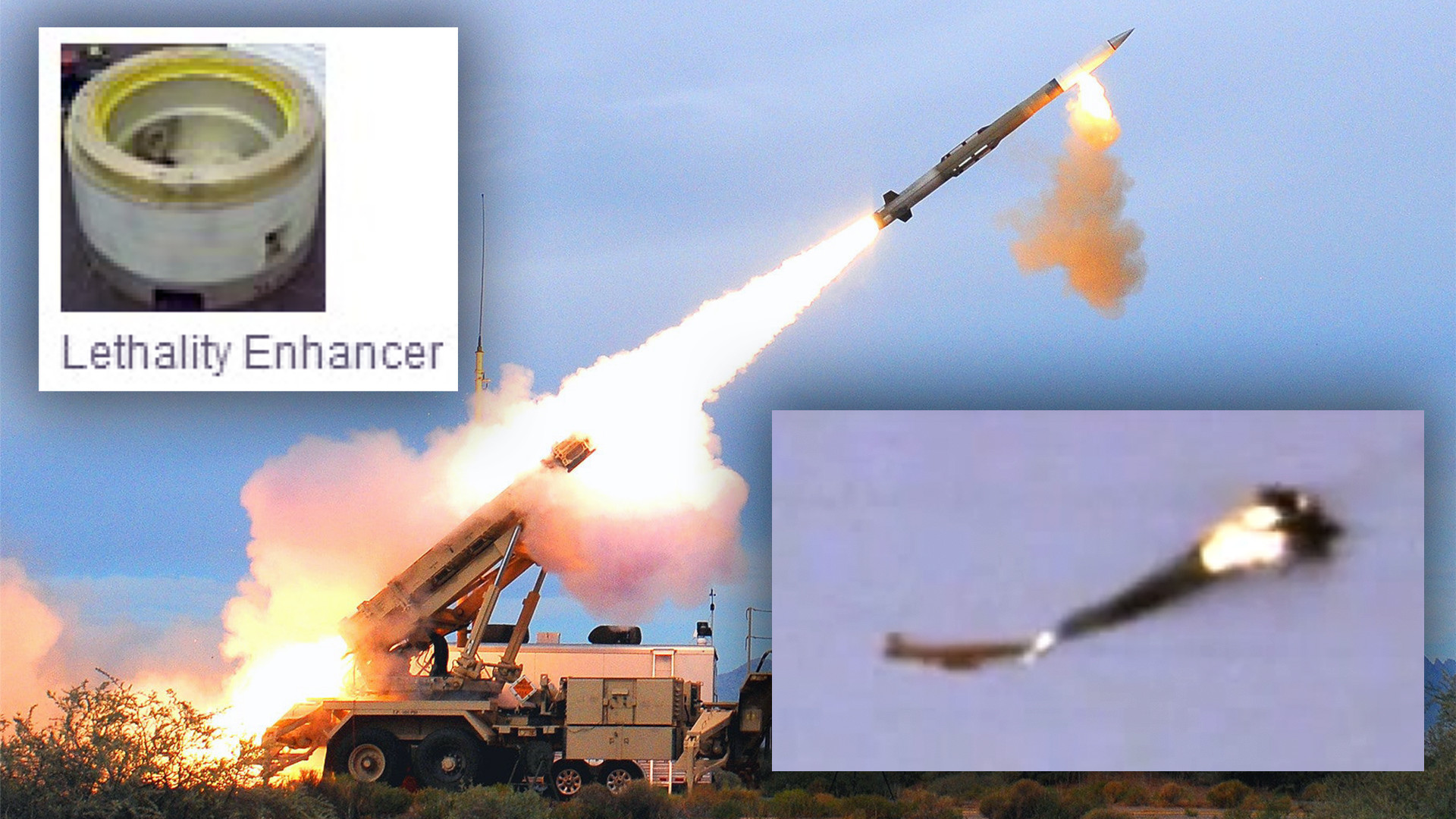While PAC-3-series interceptors for the Patriot surface-to-air missile system, like those now being used in Ukraine, are often described as purely hit-to-kill weapons, that really isn’t the whole story. In actuality, they have a hybrid design that includes a so-called “lethality enhancer” that contains an explosive charge. This component is designed to create a cloud of metal fragments around the missile’s body specifically to improve the chance of scoring a hit against an air-breathing target like a cruise missile.
The lethality enhancer came up in discussions after the tail end of a PAC-3 Cost Reduction Initiative (CRI) interceptor fell on a highway in the Ukrainian capital Kyiv on Wednesday. The PAC-3 CRI had been fired at incoming Russian missiles.
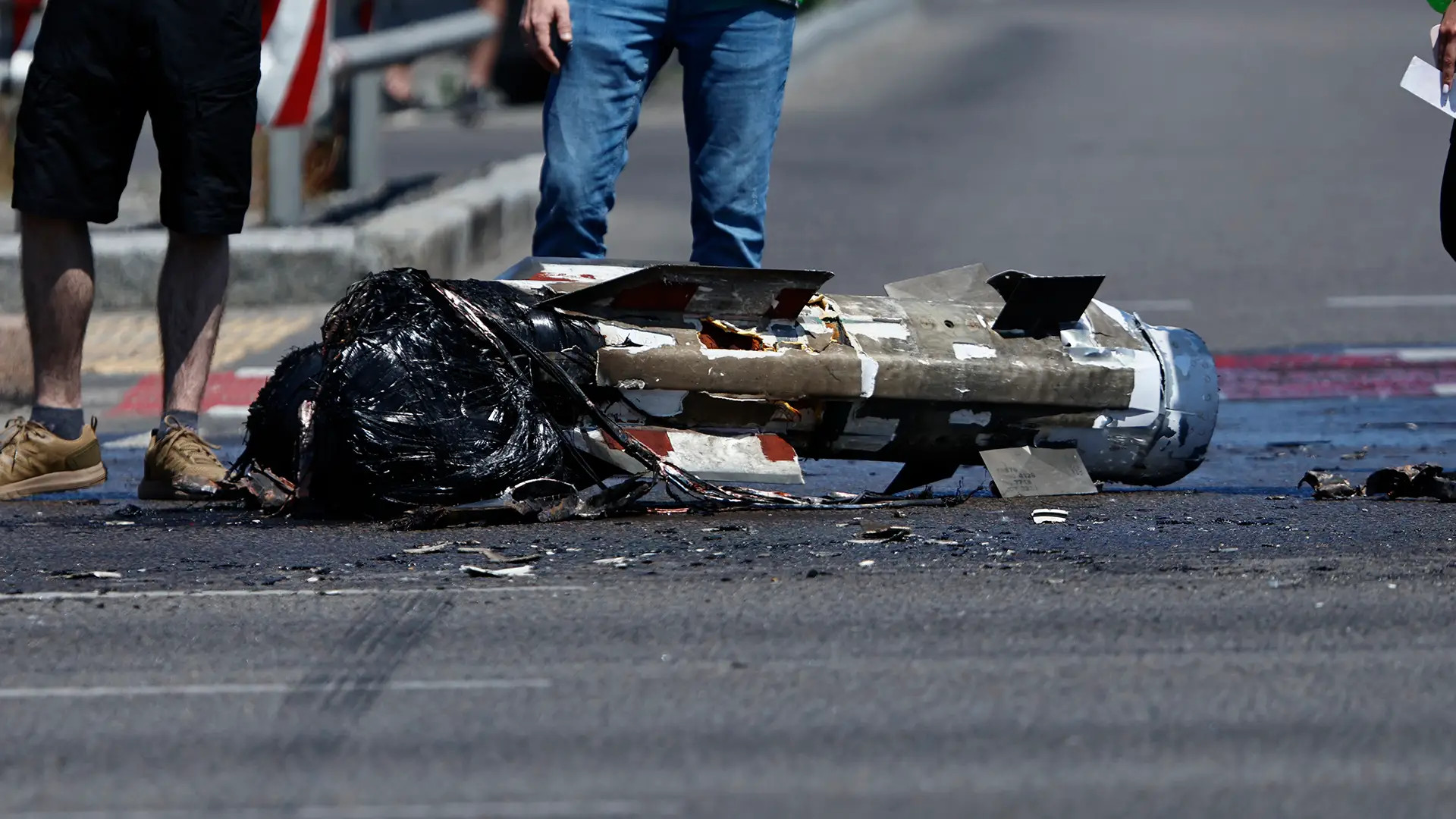
The lethality enhancer has been a feature on all PAC-3 interceptors since the development of the baseline version began in the 1990s. The PAC-3 missile, first developed under the Army’s Extended Range Interceptor (ERINT) program, represented a significant departure from earlier missiles for the Patriot system.
Most immediately noticeable is the fact that PAC-3s are significantly smaller than PAC-1 and PAC-2-series missiles. This is due to it being designed primarily as a hit-to-kill interceptor. The general definition of a hit-to-kill weapon is one that destroys its target through the sheer force of impact, rather than using a typical explosive fragmentation warhead. When it comes to surface-to-air missiles, this method of operation requires a highly agile platform. It also means the interceptor doesn’t need to have room and weight set aside for a more traditional warhead.
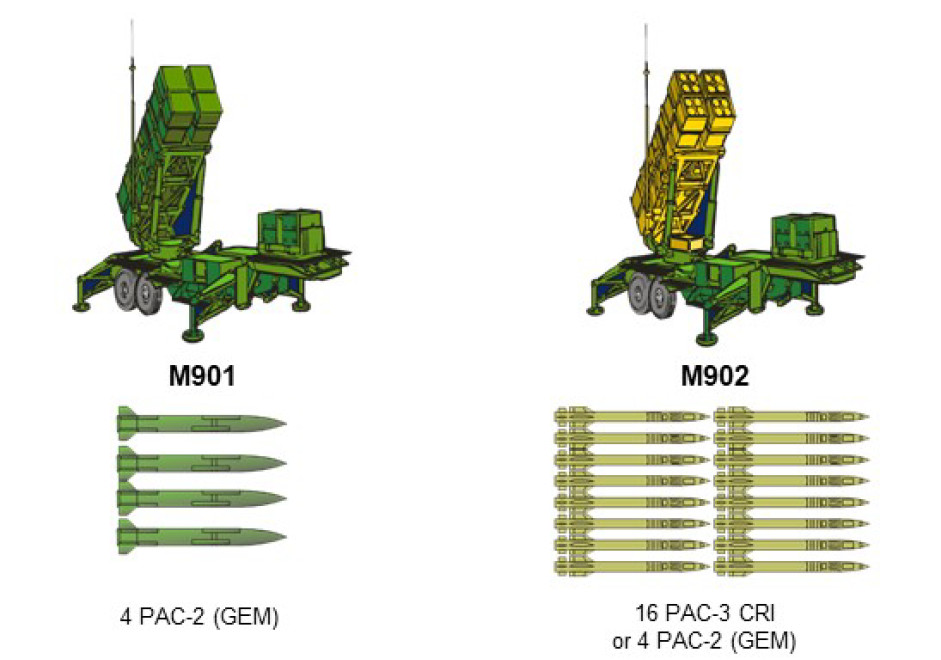
The Lockheed Martin video below on the PAC-3 series, which was released in 2005 and does not mention the lethality enhancer at all, provides a good general overview of how interceptors in this family are designed to work.

PAC-3s of all types are first cued by the Patriot system’s fire control radar and fly to a set point near the target first using an inertial navigation system guidance package. A datalink allows them to receive guidance updates during this mid-course portion of their flight. In addition to the control surfaces at the rear, each one of these interceptors has a thrust vectoring capability thanks to aerodynamic control vanes that shift the rocket exhaust plume and so-called Attitude Control Motors in the forward end of the body. The ACMs, which are arranged in a collar around the center axis of the missile, are small single-use rockets that fire sideways to change its direction in flight.
After arriving at that designated spot, the missile’s active radar seeker switches on, searches for, and works to lock on to the threat. ACMs, in particular, are used to help with fine course corrections in the terminal phase of flight and are especially useful for very high-altitude ballistic missile intercepts.
The PAC-3’s manufacturer, Lockheed Martin, as well as the U.S. military, has long touted the benefits of the interceptor’s hit-to-kill design. “Direct body-to-body contact of the missile and the target creates very high energy” transfer, the narrator of the 2005 promotional video notes, which helps ensure the total destruction of the threat. This has been presented as being especially valuable for engaging threats with nuclear, chemical, or other weapons of mass destruction (WMD) payloads, as well as ones loaded with submunitions of various kinds.
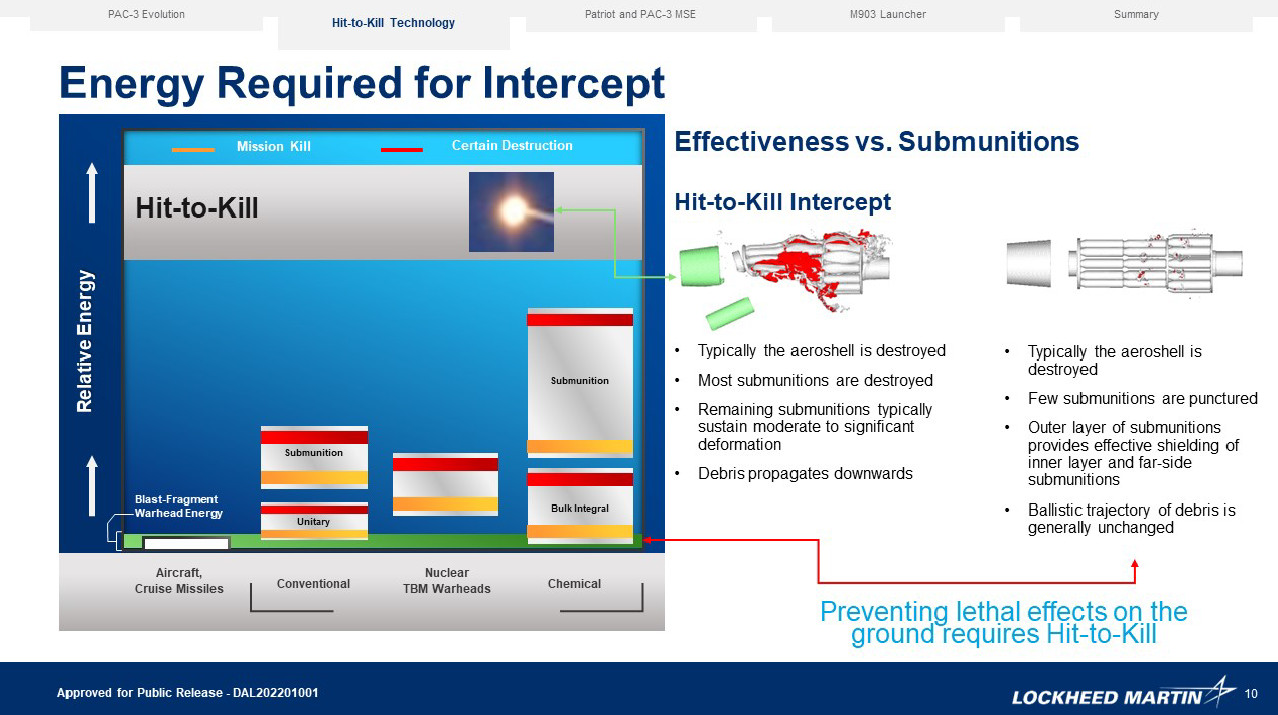
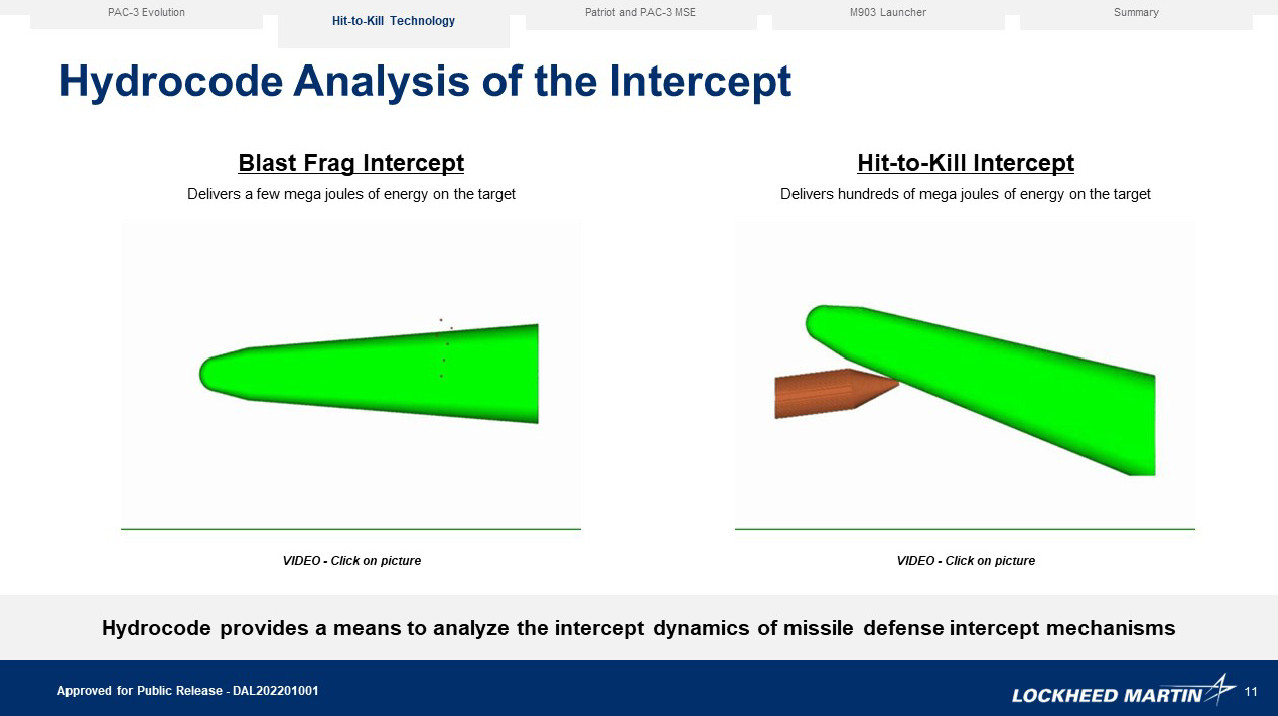
The smaller size of PAC-3 interceptors also means that more can be loaded on a single launcher at a time, increasing the magazine depth of firing batteries. Patriot launchers can be loaded with a combination of PAC-3 types and the latest generation of PAC-2-series interceptors – examples of which Ukraine appears to have also received – to further increase their flexibility, too.

When engaging ballistic threats, PAC-3 interceptors do indeed function in a purely hit-to-kill mode. The high speed that those targets are typically traveling at further increases the force of the impact.
When used against air-breathing threats, such as cruise missiles or aircraft, which are generally flying slower than ballistic missiles and may well be smaller in size, hit-to-kill alone may not be as effective. This is where the lethality enhancer comes into play.
“To further increase the kill probability against air breathing threats (not used against TBM engagement), a low fragment expansion velocity Lethality Enhancer (LE) is included in the PAC-3 missile configuration,” according to an unclassified review of the PAC-3 missile program the Army and Lockheed Martin put out in 1996. “It is an explosive assembly designed to increase the probability of target kill by increasing the lethality of Hit-to-Kill and the probability of hitting the aim point.”
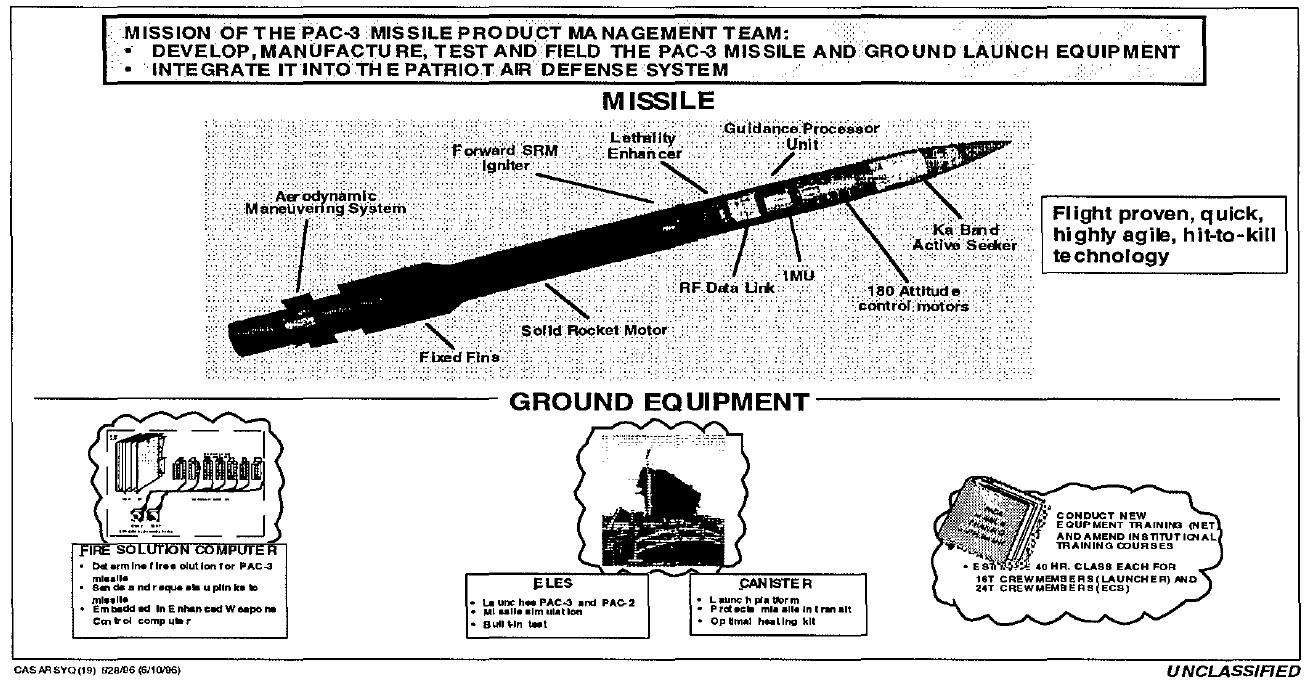
“This lethality enhancer increases the diameter of engagement with this ‘early detonation’ just prior to impact,” David Shank, a retired Army colonel and former commandant of the Army Air Defense Artillery School at Ft. Sill, Oklahoma, further explained to The War Zone. “It expands the diameter of the engagement against air-breathing platforms.”
“H2K [hit-to-kill] isn’t as effective on a slow mover as it is against a TBM [theater ballistic missile] so that adds a little extra punch,” Shank added. “Either way, it’s a bad day for a pilot.”
In short, the lethality enhancer, though it has an explosive charge, is not intended to function like a typical warhead. Instead, the denotation’s main function is to eject a number of metal fragments referred to as “cycloids.” This creates an additional cloud of debris for the target to run into. The warheads found on more traditional surface-to-air missiles, as well as air-to-air ones, are typically designed to send a cone of shrapnel into the target after being triggered by some kind of proximity fuze.
The 1996 report says the lethality enhancer used on the original PAC-3 prototypes had cycloids made of tungsten, but that steel ones were ultimately used instead on production examples of the baseline design. The complete lethality enhancer found on these initial PAC-3s contained 24 cycloids, each weighing around 95 grams (about a fifth of a pound). Its main explosive charge weighed only 330 grams (some seven-tenths of a pound). As a rough comparison, the raw weight of the explosive filler inside a standard U.S. Army M67 hand grenade is around 184 grams. It is, of course, important to note that the explosives used in the PAC-3’s lethality enhancer and the M67 are different in composition and effect.
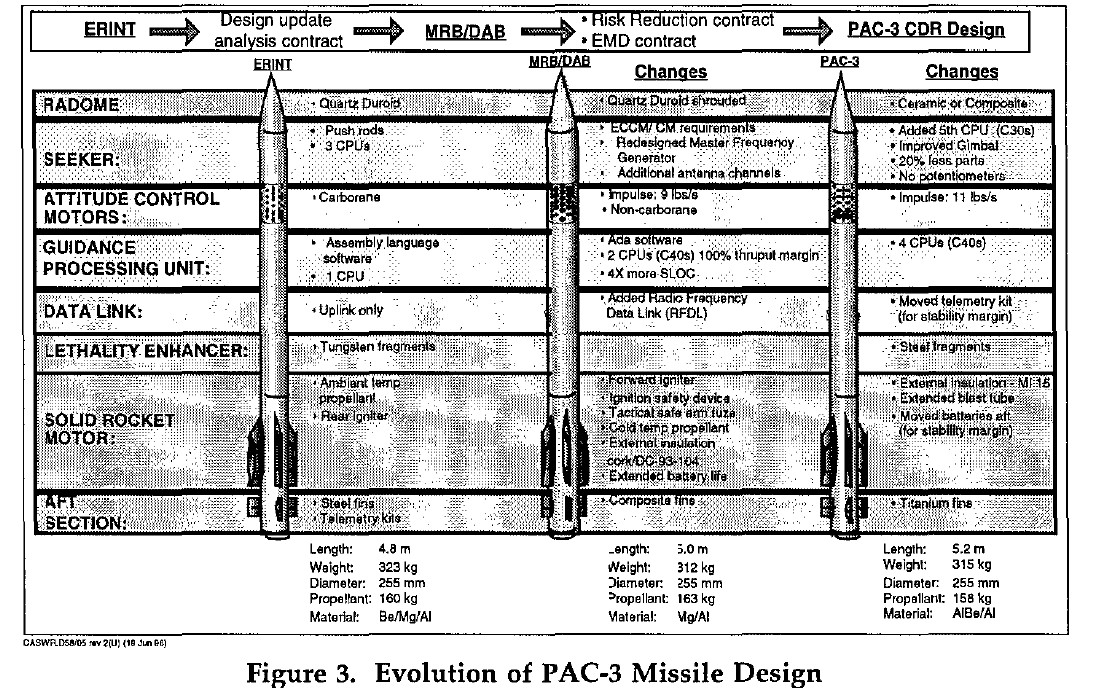
The lethality enhancer has evolved since then, but specific details are limited. Publicly available information about the latest PAC-3 Missile Segment Enhancement (MSE) variant says that one of its improvements over previous models, like the CRI version, is an all-new lethality enhancer with titanium fragments.
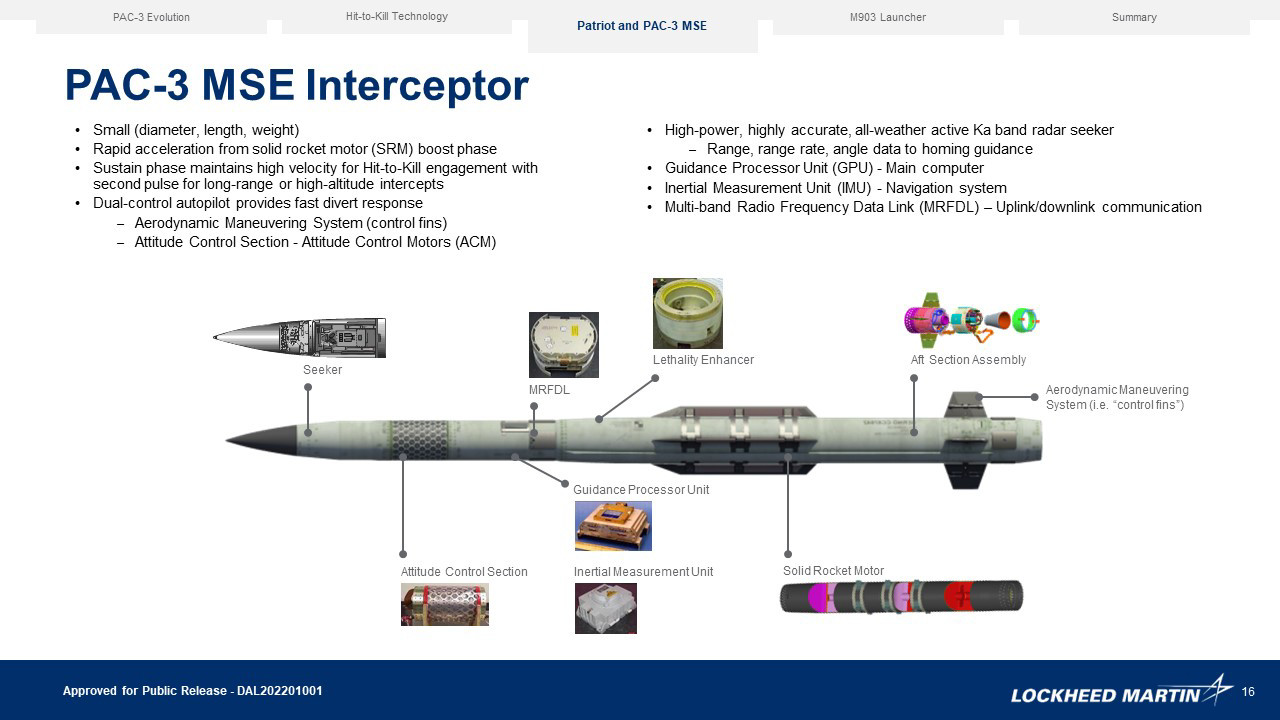
“The Army conducted lethality testing of the PAC-3 MSE lethality enhancer titanium fragments against Composition B explosive from July 2015 through June 2016 at Aberdeen Proving Ground, Maryland, to update the lethality model that predicts when a high-explosive initiation occurs within a warhead impacted by fragments,” according to a report from the Pentagon’s Office of the Director of Test and Evaluation published in 2017. “The PAC-3 MSE lethality enhancer testing showed that the existing lethality model for titanium did not predict, within 10 percent of the observed critical velocities, when a high-explosive initiation of a warhead would occur. The Army used these results to develop new coefficients for their lethality model that more accurately represent the PAC-3 MSE titanium fragments.”
These details also highlight the fact that a hit-to-kill impact can be sufficiently forceful to trigger the detonation of an explosive payload inside a target, helping to destroy it. The MSE variant has a slew of other improvements over earlier PAC-3 types, which make it more effective overall, as you can read more about here.

As can be seen in the test footage in the video below, the Lethality Enhancer is also sufficiently forceful to cause a clean separation between the front and rear ends of PAC-3 missiles. This could help explain the falling tail section, and its relatively intact condition, observed in Kyiv earlier this week.

The lethality enhancer on PAC-3 series interceptors helps further underscore the overall versatility of these missiles and why they have been such a significant addition to Ukraine’s air defense arsenal.
One of the key arguments for sending Patriot surface-to-air missile systems to Ukraine, as The War Zone has highlighted in the past, was to provide valuable anti-ballistic missile capability. This has been demonstrated by shootdowns of Russian Iskander short-range ballistic missiles and examples of the Kinzhal air-launched derivative.
At the same time, Ukrainian Patriot systems have been providing equally important additional long-range air and missile defense capacity against air-breathing threats. Cruise missiles and drones are presently Russia’s primary tools for conducting long-range strikes against targets in Ukraine.
Ukraine’s forces have reportedly been using their new Patriots to great effect overall. This includes a still-unconfirmed report that one of them may have been used to down a Russian jet inside that country’s own airspace.
The flexibility that PAC-3 interceptors offer, specifically, thanks in part to the obscure lethality enhancers inside them, is certainly part of the overall equation that helped them prove to be so effective overall in Ukraine already.
Howard Altman contributed to this story.
Special thanks to our awesome commentariat, especially x86proc and totallyaverage, for bringing up this fascinating topic!
Contact the author: joe@thedrive.com
